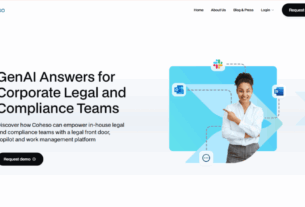Last year, LexisNexis introduced Context, a refinement of an analytics tool originally developed by Ravel Law that analyzes the language of a judge’s opinions to determine the cases and arguments the judge finds most persuasive in deciding specific types of issues. As I reported then, that original launch also included Context for expert witnesses, and, since then, LexisNexis has expanded Context to also cover courts and companies.
Today, LexisNexis is further expanding Context with the introduction of Attorney Analytics, the fifth module in the platform, for researching opposing attorneys in litigation matters.
Context Attorney Analytics analyzes the briefs, pleadings and motions the opposing attorney has filed in cases that are similar to yours and shows what arguments and strategies they have used and how they have fared.
For attorneys performing this research and analysis, this gives them the opportunity to anticipate their opponents’ arguments and be prepared to counter them in advance or when they arise.
It covers more than one million attorneys in state and federal courts, and can be filtered by practice area, jurisdiction, type of case or name of judge.
During a demonstration last week, Serena Wellen, senior director at LexisNexis, and Muthuraman KasiViswanathan, senior product manager, told me that, in developing this new attorney analytics, they surveyed legal professionals on their typical workflow for researching opposing counsel. They found that it is often disjointed and time consuming.
This new service seeks to automate as much of that research as possible. It starts by bringing the researcher to a profile page for the attorney being researched. This profile page provides a top-level overview of the attorney’s litigation history and activity, and then allows the researcher to drill down into the specific arguments the attorney has raised and the specific briefs, motions and pleadings the attorney has filed.
If you were litigating a case in Colorado, for example, you could filter the arguments tab of this overview to show all the arguments your opposing counsel had made in briefs and pleadings filed in Colorado, or further filter that by specific courts, judges, dates, topics or other parameters. You could also filter by type of pleading, such as to see arguments made only in motions to dismiss.
From the list of arguments, as you find ones relevant to your matter, you can jump into the specific document and point in that document where the attorney made that argument, and see it in context. You can also see what happened subsequently in the case, including how the court ruled.

This document tab in the attorney profile shows every litigation document filed by that attorney that LexisNexis has in its collection.
“Knowing the language and legal strategies that opposing counsel has successfully used in similar court cases can give attorneys critical insights and a tremendous advantage when preparing for trial,” Wellen said. “No other analytics offering directly connects legal language to argument activity and judicial outcomes or provides the level of depth and transparency that attorneys need to truly understand and size up opposing counsel.”
Wellen said that Context Attorney Analytics can also be used by law firms for evaluating attorneys when making lateral hiring decisions or by corporate legal departments in selecting outside counsel.
Context is available as a separate subscription to subscribers of Lexis or Lexis+.

